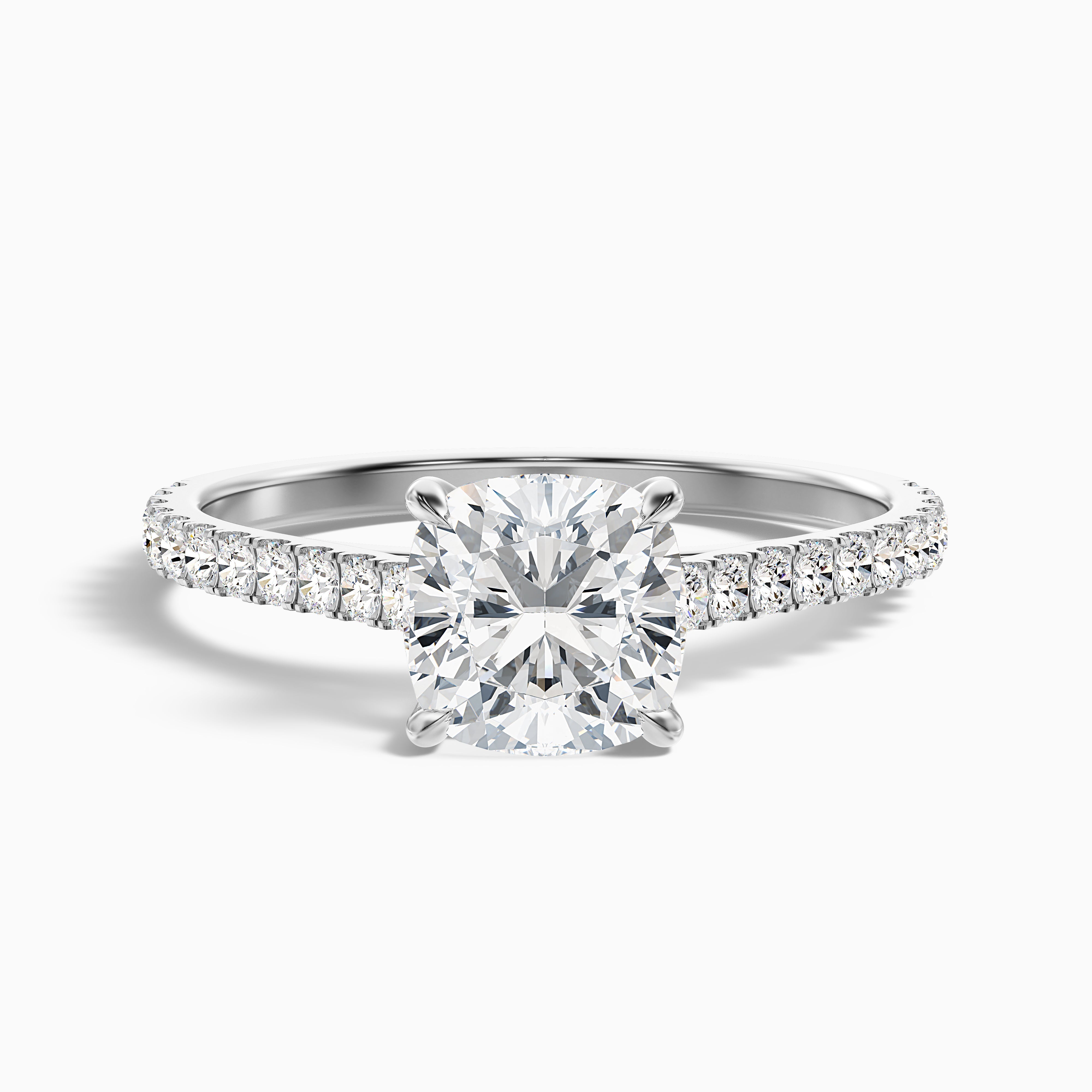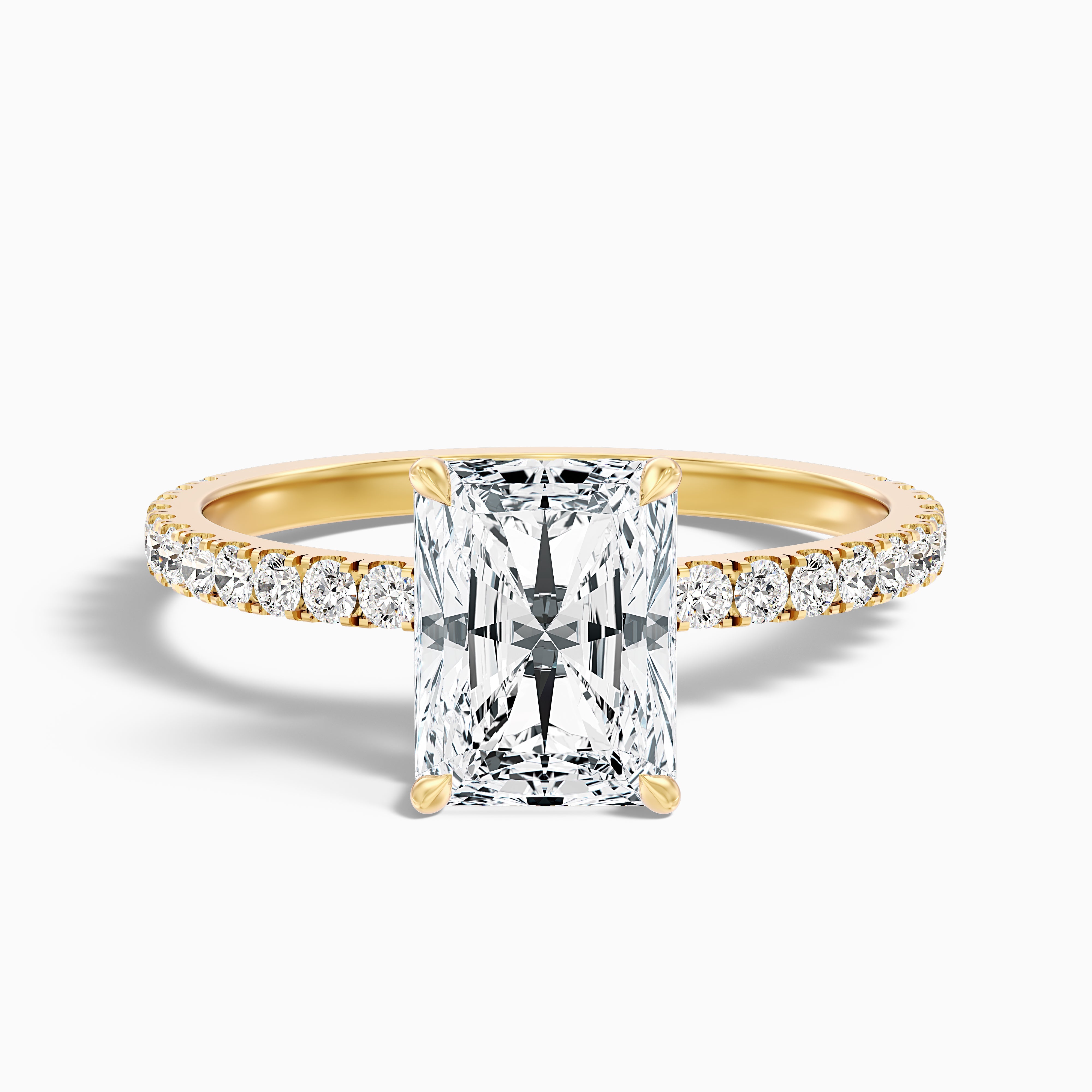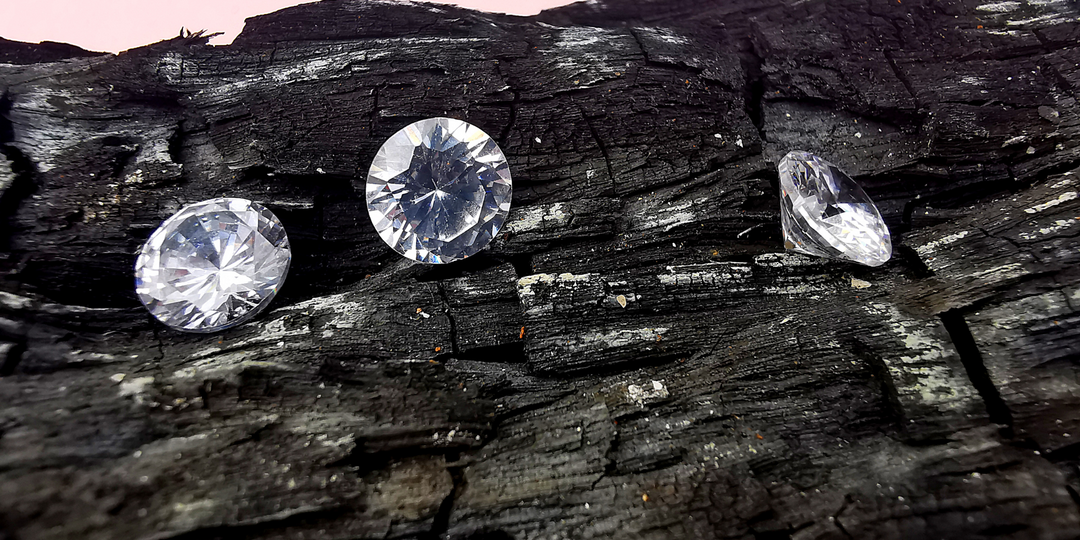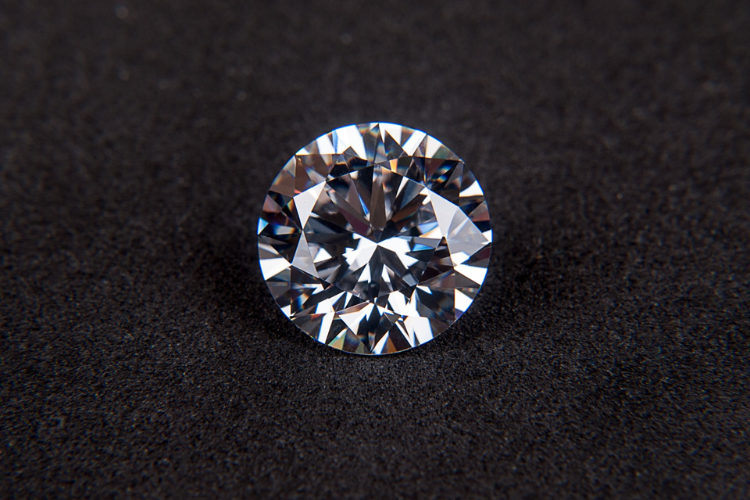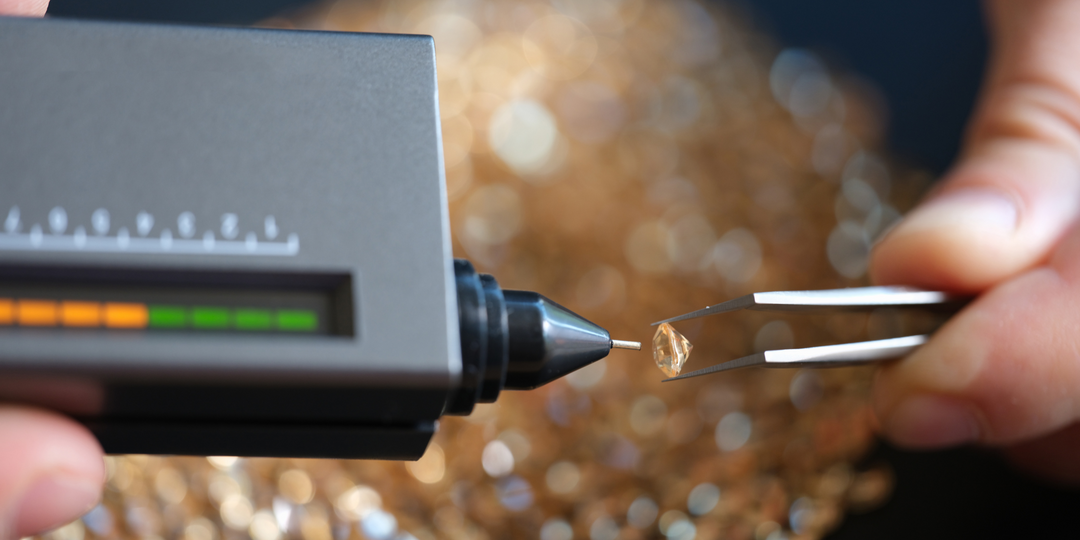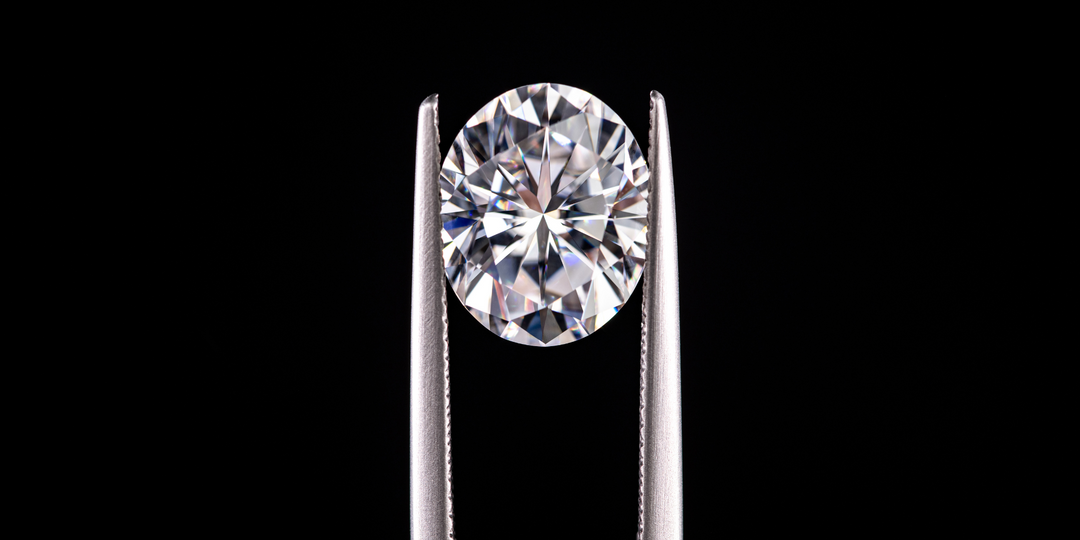The Role of Facets in a Diamond’s Sparkle and Shine

Do you want to know the secret of diamonds’ incredible brilliance? Apart from the material, what makes diamonds unique is the careful work of carving each one. This blog explores the role diamond facets play in reflecting light, adding brilliance, and maximizing a stone's natural beauty.
What Are Diamond Facets?
A facet of a diamond is a purposefully shaped and polished surface created to maximize its engagement with light. Artisans use artistic and technical skills to turn rough diamonds into faceted gems that give us the dazzling results that we fall in love with.
The number of facets in diamond cuts varies depending on the shape and style chosen. The round brilliant is one of the many cuts that stand out with 57 or 58 facets, including the culet, a small facet at the bottom point. Each faceted diamond requires incredible precision, with cutters working at microscopic levels to achieve perfect proportions and symmetry.
Modern diamond cutting is based on a combination of engineering skills and artistic thinking, using advanced technology to determine the raw crystal and optimize the facet pattern for the sake of its gorgeous look and the effective use of material.
Types of Diamond Facets
A diamond facet isn't just a random flat surface, each facet serves a specific purpose in the gem's overall light performance. The major facet types include:

Table Facet
This is the primary window for light, which is essential in deciding how bright the diamond will look.
Crown Facets
These facets are found in the middle part, taking the table from the girdle where the greatest width of the diamond is situated. The angle of crown facets provides them with the opportunity to collect light and cause the separation of colors in the diamond.
Pavilion Facets
The pavilion facets, situated under the diamond's girdle, play a crucial role in reflecting light back through the table and crown. The angle of these facets has a big effect on how bright the diamond seems to the spectator and how much light comes out of the diamond.
Girdle and Culet
At the very top of the pavilion, you will find the culet, and the girdle forms the diamond's outside boundary. In modern cuts, the culet is typically made into a sharp point instead of being made into an extra facet.
Additional Facet Types
In addition to that, the star facets which arise from the table and descend to the girdle, the bezel facets circling the table and the upper and lower girdle facets that join into other facets, are part of a diamond’s design. Such characteristics play an overwhelming role in the function of a diamond’s interaction with light.
How Facets Affect Light Performance
The magic of diamond facets comes from how they manipulate light through three primary optical phenomena:
Reflection
Some light rays, when striking a facet, are reflected at the same angle with which they struck. Facet placement is very important because it sends these reflections back to the viewer instead of letting them disperse outward.
Refraction
Light changes direction as it passes from one medium with a different density, for example, air to diamond. The high velocity shift results in noticeable refraction, and if combined with light reflections in the stone, it makes light stay trapped inside the diamond for a while.
Dispersion
Similar to how a prism scatters sunlight, white light splits into its many hues as it travels through the diamond. The configuration of facets in diamond cuts, in turn, produces a convoluted light path.
A well-engineered diamond design brings light to the table, bounces it off the pavilion facets, and sends it up through the crown for maximum brilliance to the onlooker’s eye. The brilliance of the stone is based upon a perfect arrangement of facets; any misfit or angle mistake leads to light loss through the bottom or sides, reducing overall shine.
Brilliance, Fire, and Scintillation: What's the Difference?
The sparkle we associate with diamonds actually consists of three distinct visual effects, all made possible by the arrangement of diamond facets:

Brilliance
Brilliance is the amount of total light reflected back from and through a diamond, which is its brightness. It is primarily due to the reflection and refraction of the white light, which gives well-cut diamonds their characteristic inner glow. The top table facet and the lower pavilion facets are the most important for defining a diamond’s brilliance.
Fire
Fire (also called dispersion) is the rainbow effect created when white light splits into its spectral colors as it passes through the facets of a diamond. When you turn the diamond, these bright flashes of blue, red, and green that emerge are indications of fire at work. The main determinants of how much fire is seen are the facets on the crown part of the diamond.
Scintillation
Scintillation is defined as the pattern of dark and bright regions created by the movement of the diamond, its light source, or the observer. The size, quantity, and arrangement of facets greatly influence the final brilliance, which adds a great deal of individuality to a diamond.
A finely cut diamond blends all three of these effects. If cut improperly, diamonds can display sufficient brilliance under light but lack sparkle or shimmer when worn in normal life conditions.
The Importance of Cut Quality
Cut quality is the most important of the key 4Cs (cut, color, clarity, and carat) in deciding the visual appeal of a diamond. If a flawless, colorless 2 carat diamond is cut poorly, it will appear lifeless; however, a smaller diamond with color and clarity flaws can be superb if cut properly.
Light Return and Cut Grade
Cut quality is basically a measure of how effectively a faceted diamond reflects light back to the person looking at it. Gemological laboratories measure this using a set of key parameters:
- Brightness: The amount of white light that passes through the crown
- Fire: The separation of white light into its constituent spectral colors
- Scintillation: The motion of light and dark patches and the flashes that come out as the diamond is rotated
Proportion Matters
The angles and relative sizes of diamond facets dramatically affect performance:
- Ideal cut: Best angles of facets produce the best return of light in a diamond
- Deep cut: The excessive depth sends light out of the diamond instead of back to the viewer’s eye.
- Shallow cut: The diamond does not reflect light internally, and therefore it passes through straight.
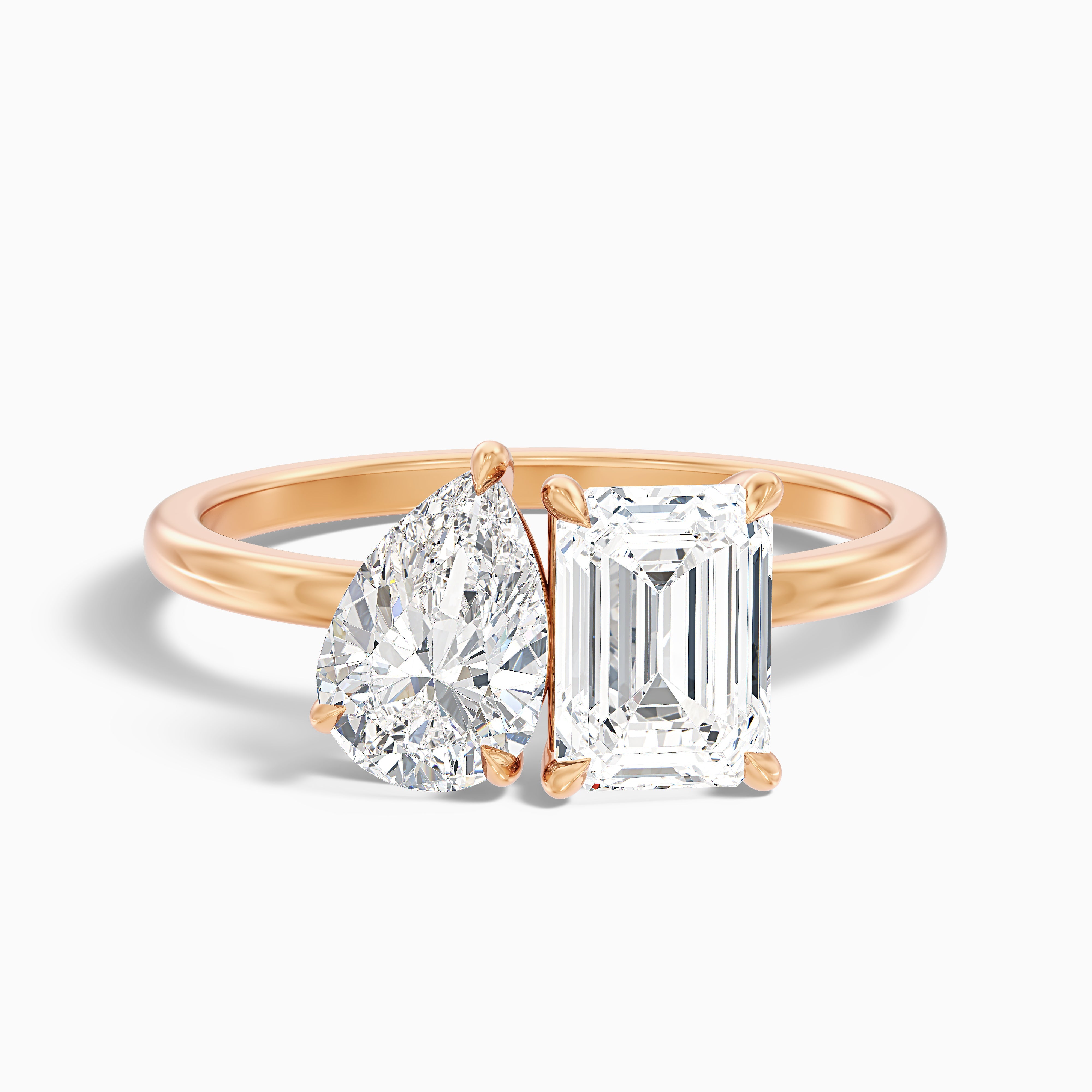 Customize Now
Customize Now
Popular Facet Styles by Diamond Shape
The diamond shape in each case reveals a unique design of faceting and produces different light effects:
Round Brilliant
Designed for maximum light reflection, this cut has 57-58 facets in a perfectly radial setup. The outcome is maximum light return, which is the gold standard that other shapes aim to achieve.
Princess Cut
A square or rectangular stone with pointed corners, typically containing 76 facets in diamond patterns similar to an inverted pyramid.
Cushion and Radiant
Such cuts unite the best of brilliant and step-cut faceting techniques, broad facets, and rounded edges. Modern cushion cuts can have as many as 64 facets, providing a gentle, romantic outlook and an impressive light return.
Emerald and Asscher (Step Cuts)
Step cuts are different from the more sparkle-inducing brilliant cuts and have elongated, parallel lines of rectangular facets. Even though step cuts don’t shine as much as brilliant cuts, they reveal the clarity of the diamond because of their open, mirror-like surfaces. Emerald cuts tend to have 58 facets as compared to Asschers with 14 additional facets, making a total of 72 facets.
Various diamond shapes produce different light impressions: round brilliants will shine with maximum sparkle, and step cuts will present a classic, reflective glow. The faceted diamond style you choose should reflect personal aesthetic preferences as much as light performance considerations.
Conclusion
Whenever you admire the sparkle of a diamond, remember that it’s the reflection of light off facets that creates that vibrancy. Craftsmanship turns clear carbon into nature’s most brilliant jewel because the exact placement of facets shows artistry’s ability to heighten nature. By knowing how the facets work with the light, you can appreciate the individuality of every diamond, from the bright round sparkle to the refined step-cut reflection.

